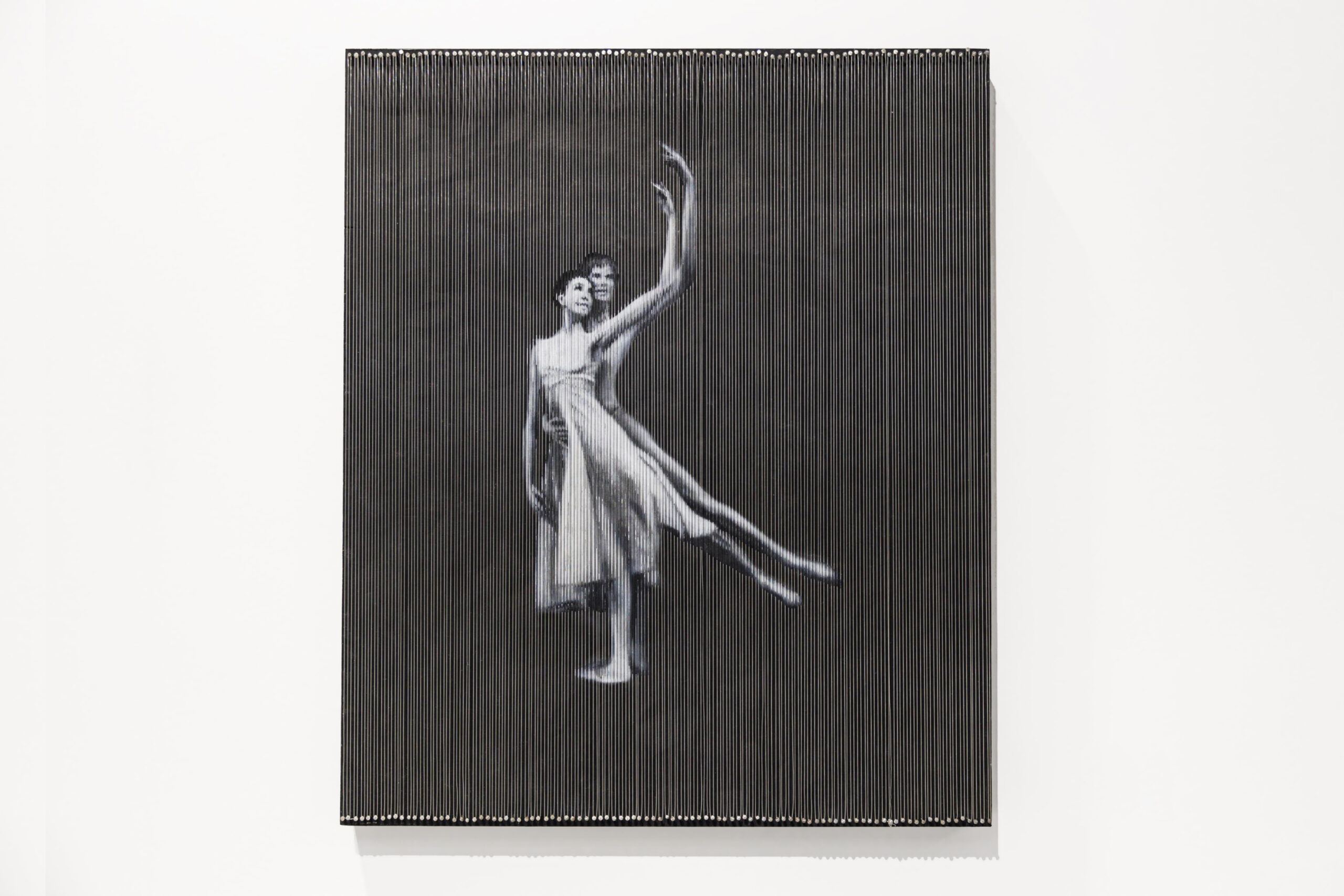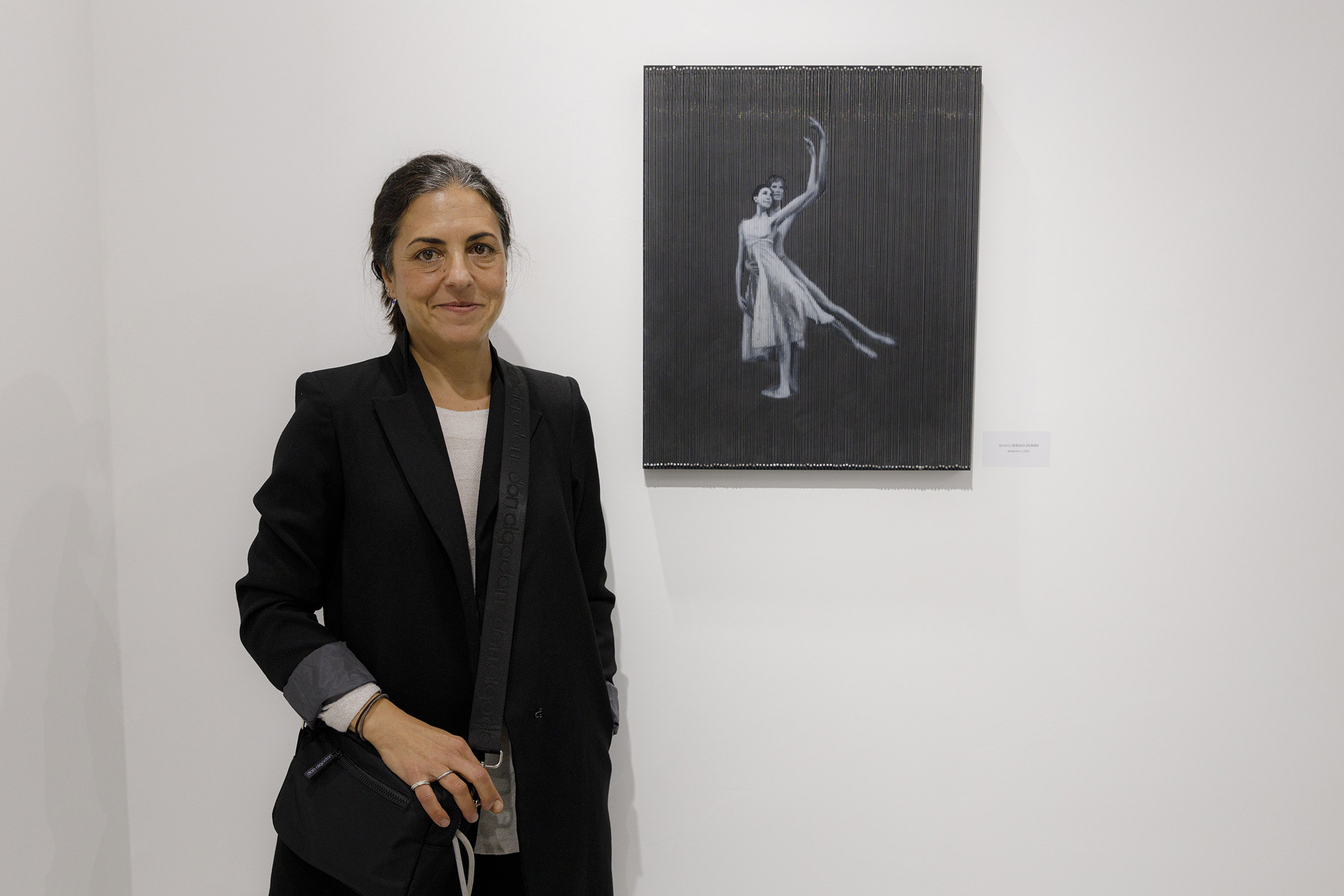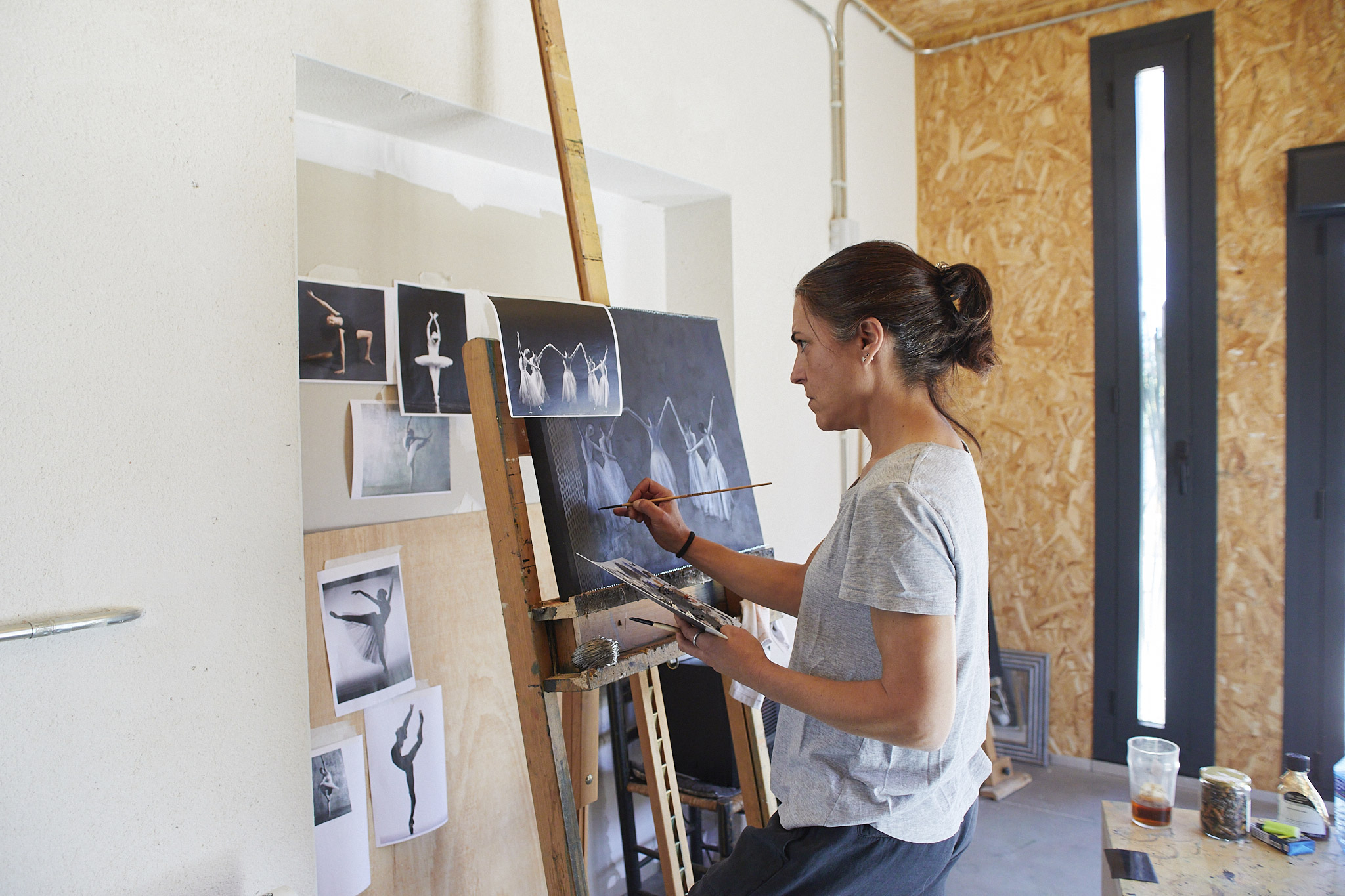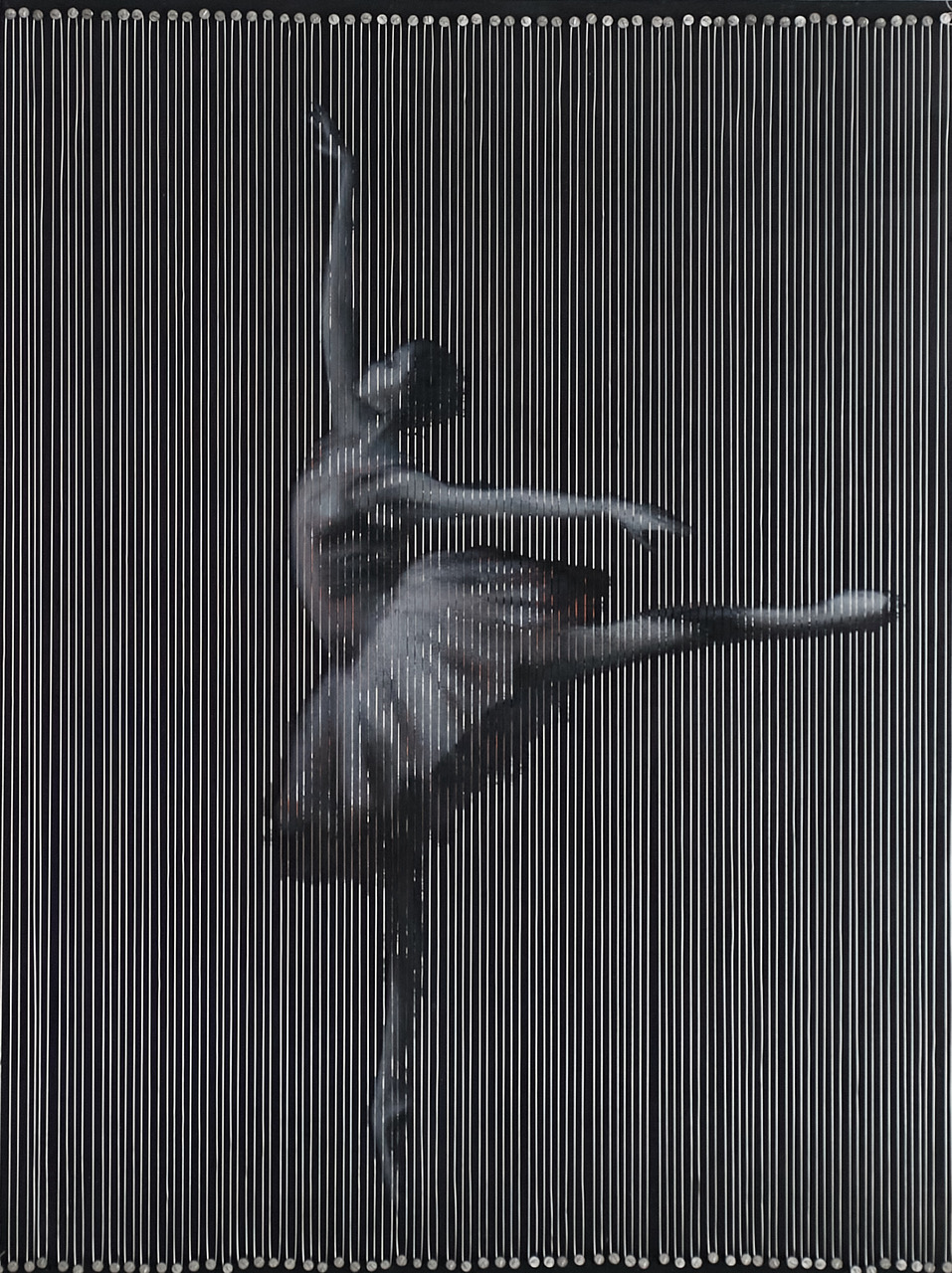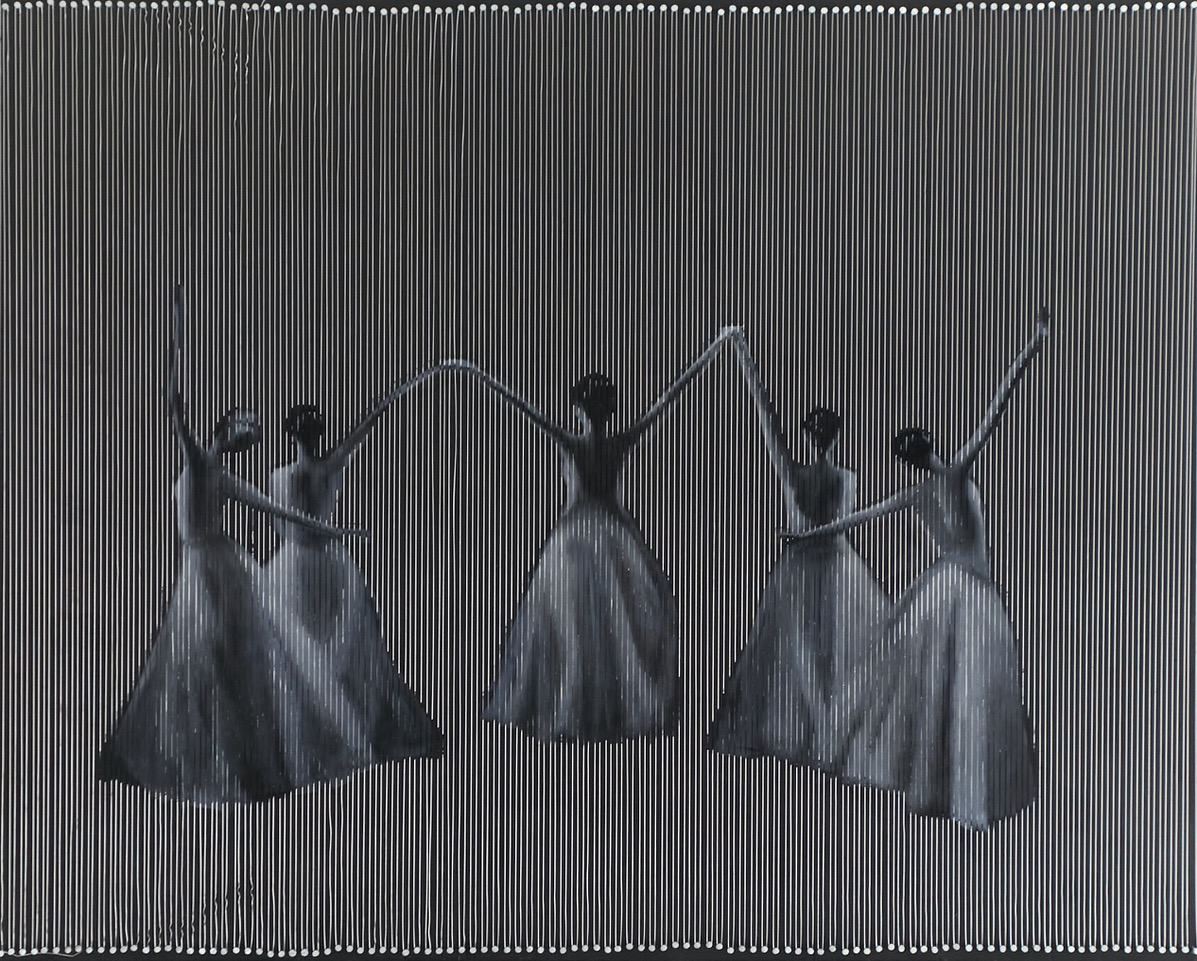THE 2023 COMEL AWARD FINALISTS
Beatriz Zerolo Durán
Madrid, SPAIN
www.beazerolo.com
www.beazerolo.com
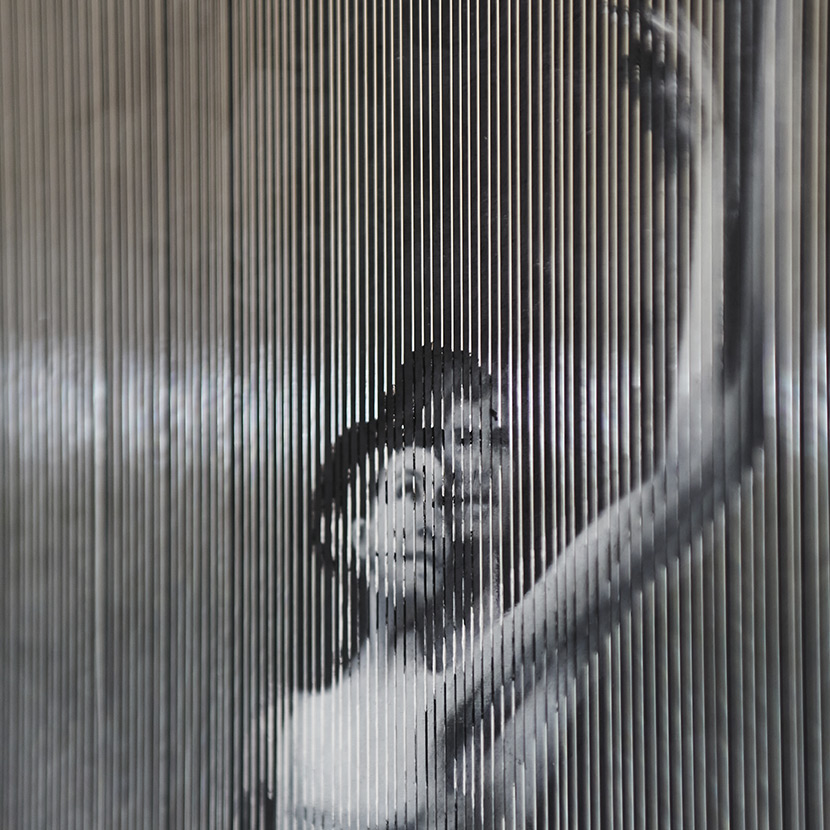

THE 2023 COMEL AWARD FINALISTS
Beatriz Zerolo Durán
Madrid, SPAIN
www.beazerolo.com
www.beazerolo.com
BIOGRAPHICAL NOTES
Painter and graphic designer who lives and works in Madrid. Graduated in Law, she was trained in Academia Artium Peña, with the support of artists such as Jose Luis Rodriguez Posadas, Luis Ruiz del Arbol, Carmen Palomo. In her artistic journey, She has gone through classical figuration, impressionism, expressionism, fused painting and glazes to material painting. In her canvases, geometry and color, form and matter, are not only means of artistic expression, but are part of the same work. She has participated in solo and group exhibitions in Spain and was selected for the Florence Biennale this year.
ARTWORK IN CONTEST
BALLERINA V, 2023
PAINTING - Oil on board with overlapping painted aluminium filaments
cm 50 X 60 X 4
Beatriz Zerolo Durán visually interprets the theme of the dance with a double and evocative register, the visual one of the image that is recomposed in the mobile and changing fabric of aluminum threads, and the more metaphorical one, of a more internal dynamism, all spiritual, alluding to a musicality of soul, which serves as a delicate emotional and intimist background to the work.
Interview by Ilaria Ferri
"El mundo pende de un hilo,...de un hilo fino, de un hilo sutil." (The world hangs by a thread...a fine thread, a thin thread).
Rafael Berrio
Your work Ballerina V was selected to be exhibited in Italy with the 13 finalist works of the 10th edition of the COMEL Award and was particularly appreciated by the public especially for its innovative technique. Can you describe the stages of the process?
The dancers (Bailarina V) are painted in two moments and with two different techniques, like everything else in the series. First I paint the dancers with oil paints, in different layers. I paint them as if these were the final work. Once dry, I hammer the nails on the sides at a distance of 0.5 cm between them. The nails must be straight and firmly in place to withstand the tension of the wire.
Once the nails are firmly set, I run the wire through, trying to make it as stretched as possible. Then I repaint the dancers exactly the same but on the wire, in this case using acrylic paints. To paint on the wire I need a special light to avoid reflections and I have to be very careful not to make mistakes because it is not possible to erase.
Where did the idea of using aluminium in this form come from? How long have you been using this technique?
The idea of using aluminium wire came because I had an aluminium company working on the roof of my house. I was interested in the material they used and how they processed it. I started by buying different types of aluminium, in sheets, in grids......until I got to wire.
So far, I have used this material for two years, mostly to make portraits. I play with the shadows so that they can finish drawing faces by themselves.
Beatriz Zerolo Duran in her studio
The image of ballerinas returns in your works. What is the source of this inspiration? What do you want to communicate through the image of a dancing body?
I have been fascinated by dancing since I was a child, so much so that I wanted to become a dancer. Last year, I finally found the time to go back to dancing and felt the need to start painting ballerinas. To me, the dancer represents, first of all, freedom.
Dance is an art in movement. You choose to represent it pictorially, thus statically. Yet in your works, thanks to the wire technique, there remains a feeling of perceiving a kind of movement. How do you position yourself concerning the relationship between stillness and movement in your works?
The feeling of movement created by the wire was a surprise. Using the wire as a double layer, I sought a double reading the work so that the dancer's expression was not so obvious, leaving room for the viewer's interpretation.
Ballerina II - Oil on board, wire as a second layer.
Your works often use a few colors, often just black and white, to which, in some cases, you add a light complexion or a shade of blues. What is this choice related to?
Black is a color I always use in my works, a well-done black says it all. I use it in contrast to the other colors, and in this series of Ballerinas, I decided to use only white to underline the design and provide simplicity.
The metallic threads and essential chromaticism led to suggestions related to the first television sets where black and white images were intercut with vertical lines. Is this suggestion related to early enjoyment of the entertainment world intentional? Do you feel that your works connect to the imaginary of the 1950s-60s?
Good question!!! I hadn't thought about that. It may be that I was influenced by the black-and-white movies I was seeing with my children around the time I started working with this technique (especially Charlie Chaplin). Andréj Tarkovsky also left his mark on me, both with his films and with his book Sculpting Time. I love that atmosphere of mystery he creates in black and white.
Ballerina VII - Oil on board, wire as a second layer.
In your works before the ballerinas, the thread element used within the work returns. It is a kind of link between your earlier phases and the latest ones. What does this element that returns in your work symbolize for you?
Yes, the use of metal wire was an evolution of the use of string. In the earlier series I used rope as wire and once it was stretched with nails I painted it. The use of wire has a religious meaning. There is something external to us that weaves our lives together, that thin thread that singer and poet Rafael Berrio talks about, "El mundo pende de un hilo,...de un hilo fino, de un hilo sutil." (The world hangs by a thread...a fine thread, a thin thread).
The way I use the wire, whether rope or wire, giving it tension is an expression of the very tension of life that leads us to seek and want to understand.
Regarding this technique and regarding your subjects, are there any artists from the past who are guides and inspirations for you?
My guides and masters that I would like to resemble are, first and foremost, Velázquez, not only for technique but especially for how he sets the works among the more modern ones I have as an examples Tápies, with his use of matter, "living" matter, and Congdom, whose freedom of expression I admire.
Lo Evidente - Oil, pigment and rope.
How is your work continuing after the COMEL Prize? Are you working on any new projects?
I am currently working on two projects where I am still using thread. One is a painting of dancers, this time in color and large format. Seeing how thread tension works in a large painting is challenging. The other is a tribute painting to the victims of the Ukrainian war. A subject I can't leave aside and need to find again in painting.
I want to work with thread in sculpture at some point…it will come.

